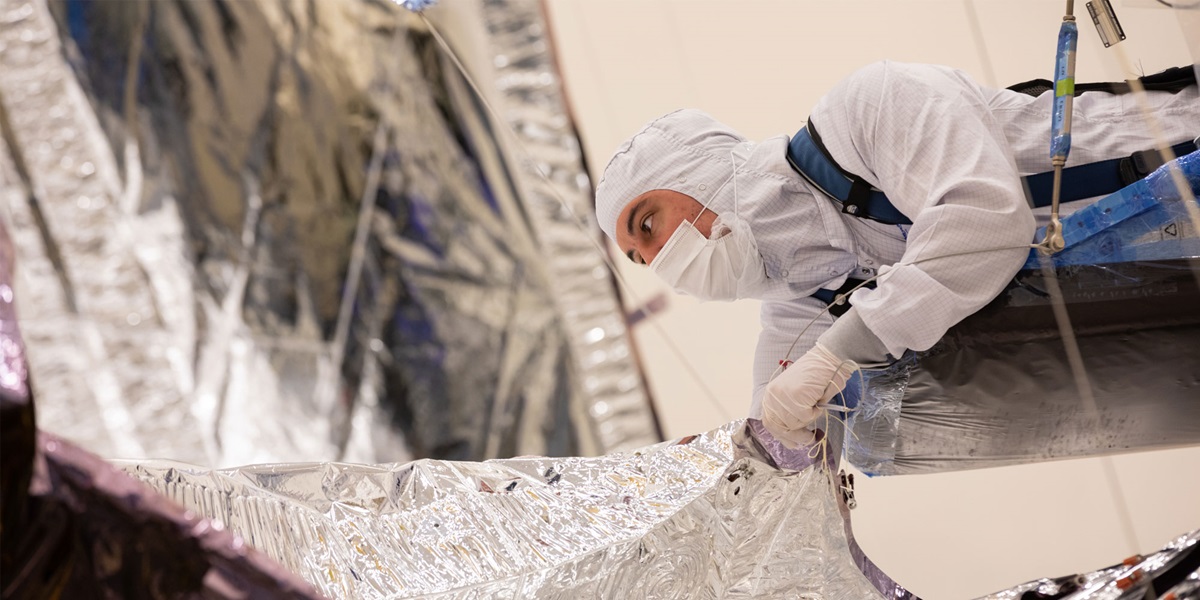By Jillian Wright
Growing up in a small Minnesota town between two major U.S. Air Force bases, Doug was surrounded by aircraft.
“Aircraft were always flying overhead, which instilled a real interest in aviation,” said Doug, who spent his childhood attending air shows with his dad, flying kites and handmaking models, boomerangs and parachutes. “Thinking about all the fun I had as a kid playing with anything in the air, I thought it’d be nice to make a career out of it!”
That’s why, after graduating high school in a class of 17, Doug majored in aerospace engineering at the University of Minnesota and later in aeronautics at Caltech.
Fast forward to today, Doug — now a Northrop Grumman Fellow — is happy with his decision. For the past 46 years, he’s worked at Northrop Grumman, fulfilling his aerospace passion.
“I’m still here because I enjoy what I’m doing. Every morning, I can’t wait to work on the projects I’ve been pushing forward,” he said. “There’s still some unfinished business.”
So, what’s this unfinished business, exactly? The answer has been 14 years in the making. And it all started with… napkins.
“This is an exciting time, as we’re enlisting researchers across Northrop Grumman to help us define Hatchet for the future.”
— Doug, Northrop Grumman Fellow
A New Approach
In 2009, Doug was a staff engineer on several programs supporting guided munitions, which are weapons deployed from aircraft or ships to eliminate threats. While reviewing military proposals and requests for smaller munition payloads, he began to see a need for a new, all-encompassing approach to air-delivered weapon systems. At the time, the Air Force was requesting a 20-to-30-pound payload for miniature cruise missiles; only four payloads could be added to each missile, yet each payload had to be able to take out four targets.
“I couldn’t figure out how to do that,” he said.
Doug began scribbling ideas on napkins, developing something that didn’t exist yet. That’s how Hatchet was born.
Small and Mighty
The first of its kind, Hatchet is a miniature munition for manned and unmanned aircraft to carry precisely delivered lethal weapons — a proven game-changer in air mission effectiveness. Weighing six and a half pounds, its foot-long payload can produce 45% to 80% of the effects of a 500-pound munition, depending on the target. It uses a global positioning system and laser seeker to accurately guide itself to a specified target.
“From its inception, Hatchet was envisioned as a complete weapon system comprised of mission planning, aircraft platform, multiple munition launchers and the munition itself,” he said.
Doug’s journey with Hatchet over the years — filled with studies, a whitepaper, a contract, more studies and flight tests — has been a sequence of starts and stops.
“We had to overcome a number of challenges to prove that something this small could fly,” he said.
Forging into the Future
Last year, Hatchet successfully completed numerous live fire tests, and the team completed a trade study to design a payload concept for a new precision strike missile. Hatchet Block 2 is the result.
Designed for deployment from high-speed missiles, this version of Hatchet is network-enabled and autonomous with sophisticated imaging seekers, miniature datalinks, compact power sources and anti-armor mechanisms to defeat targets not envisioned in Hatchet Block 1.
“This is an exciting time, as we’re enlisting researchers across Northrop Grumman to help us define Hatchet for the future,” Doug said. “I’m encouraged by seeing how the vision I had is now being shared across the company, as well as within the U.S. government, for the potential of this payload technology.”
Joy in Conceptualization
From napkin scribbles to successful demonstrations of real-world application, Doug spends most of his time thinking about how ideas could become reality. For him, that’s the fun part.
“The conceptualization is the joy,” he said. “I think a lot about solving problems and trying to get something in the hands of warfighters to make a difference.”
And although Hatchet has come a long way, this is only the beginning for Doug’s invention.

Life at Northrop Grumman: Recent Stories
Shape your career journey with diverse roles and experiences that expand your expertise, feed your curiosity, and fuel your passion.

Life at Northrop Grumman: Archived Stories
It takes every one of us to make the impossible a reality. See what life is like at Northrop Grumman.